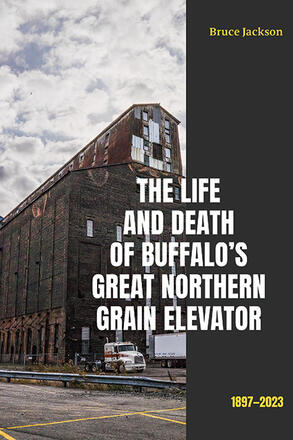
The Life and Death of Buffalo's Great Northern Grain Elevator
1897-2023
Alternative formats available from:
A stunning visual memorial to Buffalo's architectural and industrial history.
Description
Archer Daniels Midland got lucky the night of December 11, 2021: a fierce winter wind took out a third of the brick wall of Buffalo's Great Northern Grain Elevator. ADM had wanted to demolish the building since 1993, but each of its demolition requests to the city had been blocked. Six days after the storm, with no public hearings, the building was condemned. A unique piece of Buffalo's economic and global architectural history was gone.
Grain elevators are part of Buffalo's—and the nation's—architectural heritage. Unlike earlier wooden structures, the Great Northern was made of steel; it was fireproof. The steel bins kept the grain dry and the rats out. The entire steel structure was riveted and bolted into a single entity. The Great Northern couldn't burn down or blow up; it couldn't be knocked down, and it was incapable of falling down. When the Great Northern was completed seven months after the shovels broke ground, it was the largest grain elevator in the world. It was built to last, and last it did until the eight-month task of tearing it apart began on September 16, 2022.
Photographer and activist Bruce Jackson documents the story of this key architectural landmark through text, documents, and his own photographs taken over a period of several decades to tell this tragic story that will appeal to anyone interested in the history and preservation of America's industrial culture.
Bruce Jackson is SUNY Distinguished Professor and the James Agee Professor of American Culture at the University at Buffalo, State University of New York. His numerous books include American Chartres: Buffalo's Waterfront Grain Elevators; The Story is True: The Art and Meaning of Telling Stories, Second Edition; Ways of the Hand: A Photographer's Memoir; and Voices from Death Row, Second Edition (with Diane Christian), all published by SUNY Press. He lives in Buffalo, New York.
Reviews
"Bruce Jackson's Great Northern is stunning, both as a work of photography and as an indictment of the public trust gone missing in an American city. The text provides the context for the truth that the photographs reveal: An imposing and beautiful work of nineteenth century engineering was working just as designed and built well into the twenty-first century. Airtight, watertight, resting in a frame of massive steel columns, beams, and trusses—the building was never going to fall down of its own, or nature's, accord. Only venal men could cause that. Over a fall, a winter, and part of a spring, the falsity of the justifications for destruction of this American landmark was painfully evident to anyone who cared to bear witness. Many did. Bruce Jackson has perhaps done it best." — Tim Tielman, Director, The Campaign for Greater Buffalo History, Architecture & Culture